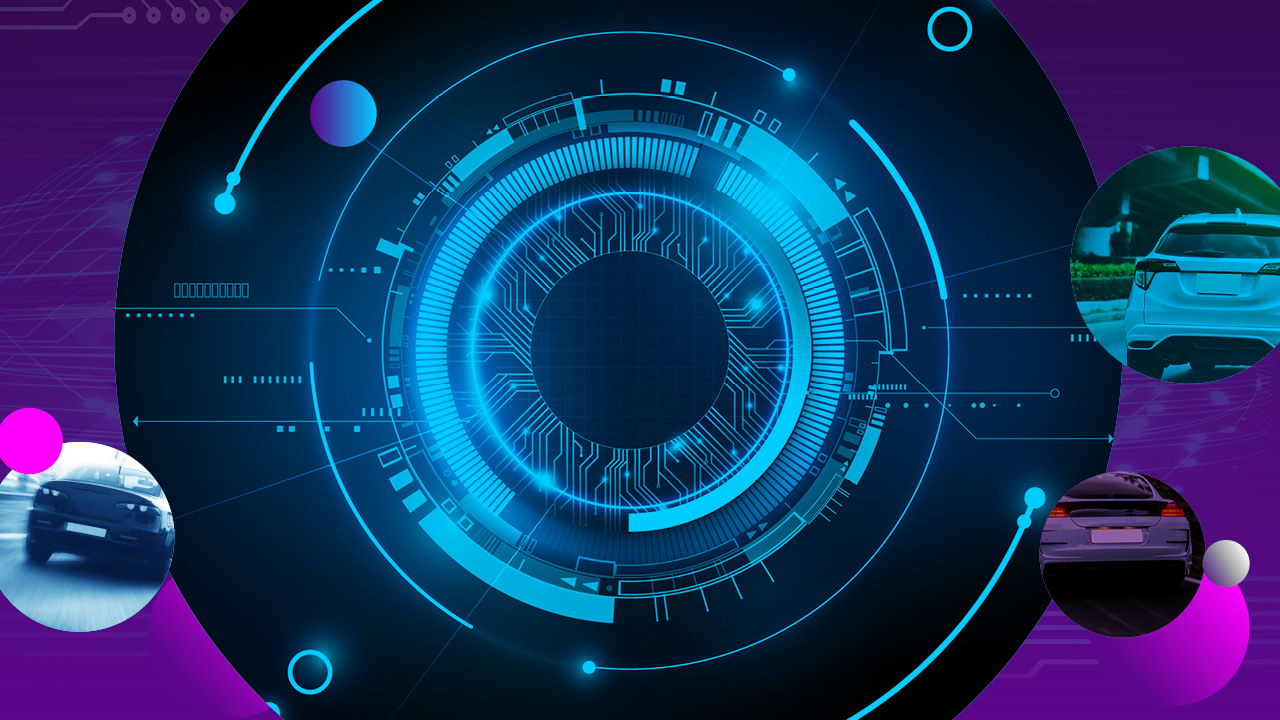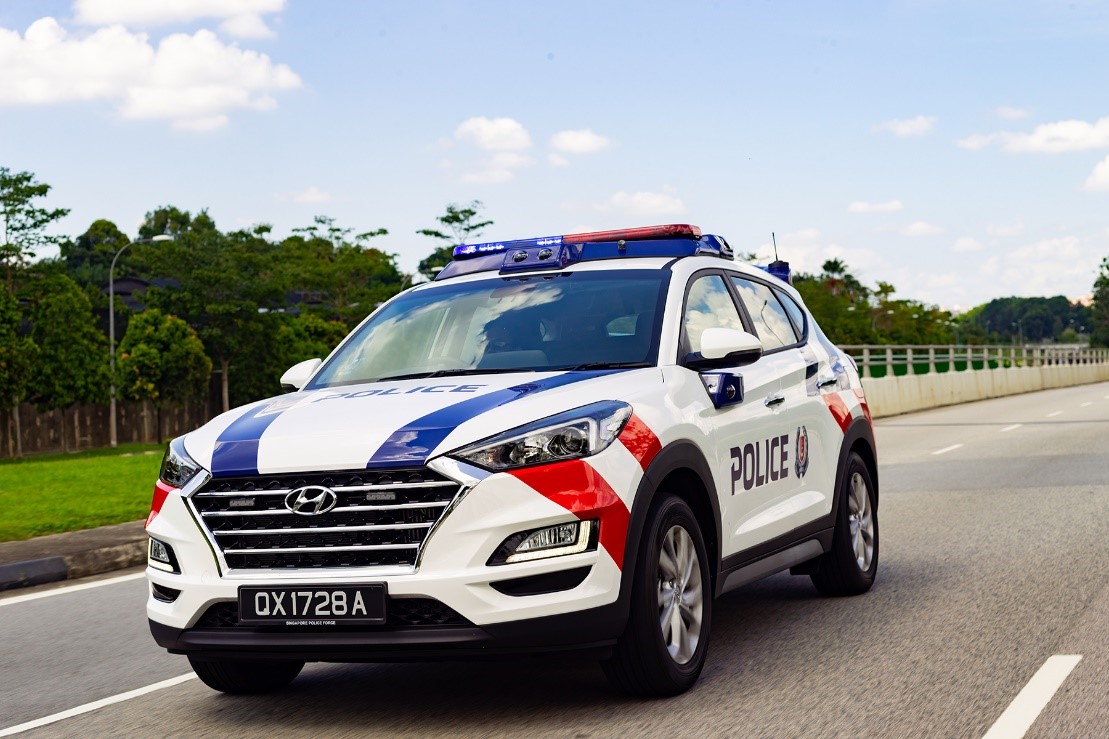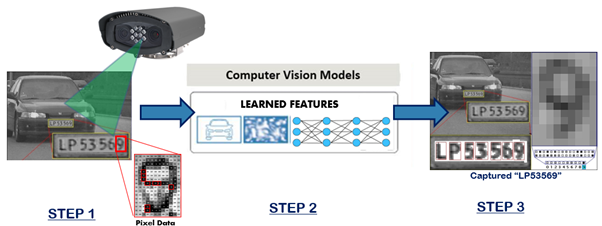
A seemingly innocuous car cruises by on the highway, no different from the other vehicles. Just moments later, a police car sets off after it. But just how did the police identify the suspicious vehicle?
Computer Vision, a field of Artificial Intelligence (AI), enables cameras, computers, and systems to derive meaningful information from the real world through digital images, videos, and other visual sources, generating real-time alerts and insights. If AI functions as the brains behind a computer, Computer Vision acts as its eyes, enabling it to “see” and comprehend the real world around them. Instead of the human retina, Computer Vision trains machines using cameras, algorithms, and data.
 SPF’s Next-Generation Fast Response Car (Image Credit: SPF)
SPF’s Next-Generation Fast Response Car (Image Credit: SPF)
In the Home Team, Computer Vision has been deployed in the Automated Number Plate Recognition (ANPR) technology in SPF’s Next-Generation Fast Response Car (NGFRC). Cameras on the vehicle not only allow it to monitor its surroundings, but also track vehicles that have been reported as stolen or listed as being of interest to SPF. With better “sight”, the NGFRC improves the operational effectiveness and safety of the ground officers!
How does Computer Vision work to identify vehicle number plates? It all boils down to pattern recognition in three steps.
 (Image by HTX, adapted from Openframeworks, Adaptive Recognition Hungary, and V7 Labs.)
(Image by HTX, adapted from Openframeworks, Adaptive Recognition Hungary, and V7 Labs.)
First, it acquires the information. Data from the real world is collected through video cameras and converted into a digital image, with each data point known as pixels. Each pixel is recognised by the computer as numerical data. An example of how a computer “sees” an image and assigns pixels values at each coordinate is shown on the right.
Next, it recognises the information. The computer applies complex mathematical calculations, known as Computer Vision models, to discern patterns in the pixel data that represent the objects of interest.
Two commonly used Computer Vision algorithms are applied here: Object Detection and Object Classification. In a single digital image presented to the computer, the former allows machines to detect objects, while the latter differentiates the types of objects, such as a car, truck, or bicycle.
In the case of ANPR, the computer would be trained to focus on the characteristics – e.g. shape, colour, and position – of different vehicle number plates.
Finally, it interprets the information. The processed data is translated into textual and visual information, such as “LP53569”, recognised to be the license number of the suspicious vehicle.
This info is then systematically flagged to officers, allowing them to make critical and swift decisions in situations.
Beyond visual analysis of vehicles for SPF, HTX’s Sense-making and Surveillance Centre of Expertise also develops Computer Vision algorithms for other Home Team Departments and WOG agencies. This includes crowd count alerts for COVID-19 safe management measures.
Some other applications of Computer Vision include facial recognition (for biometric verification), augmented reality (to detect physical objects), and self-driving cars (to detect obstacles for navigation).
Much like Artificial Intelligence, Computer Vision technology has become an indispensable technology that teaches inanimate objects to “see” and “understand” things around them, mimicking human intelligence.
So, if you ever come across an NGFRC, take a second look, and you may just see it looking back at you, keeping you safe!

